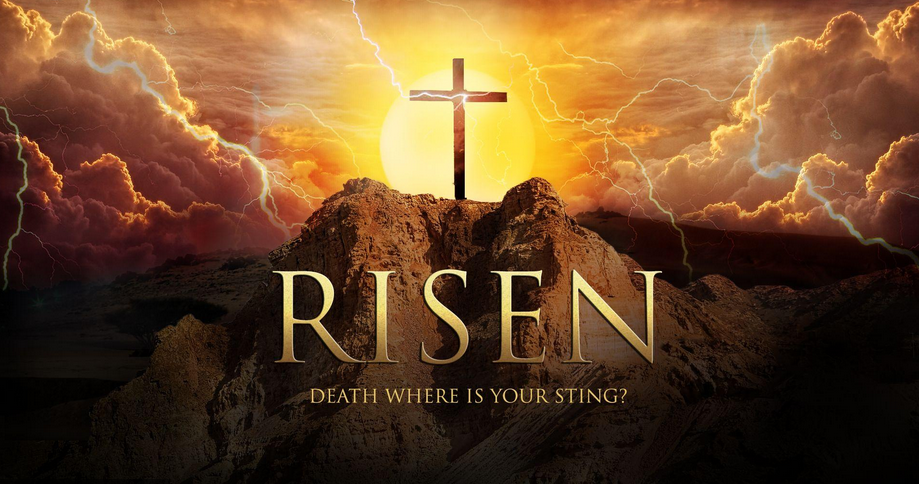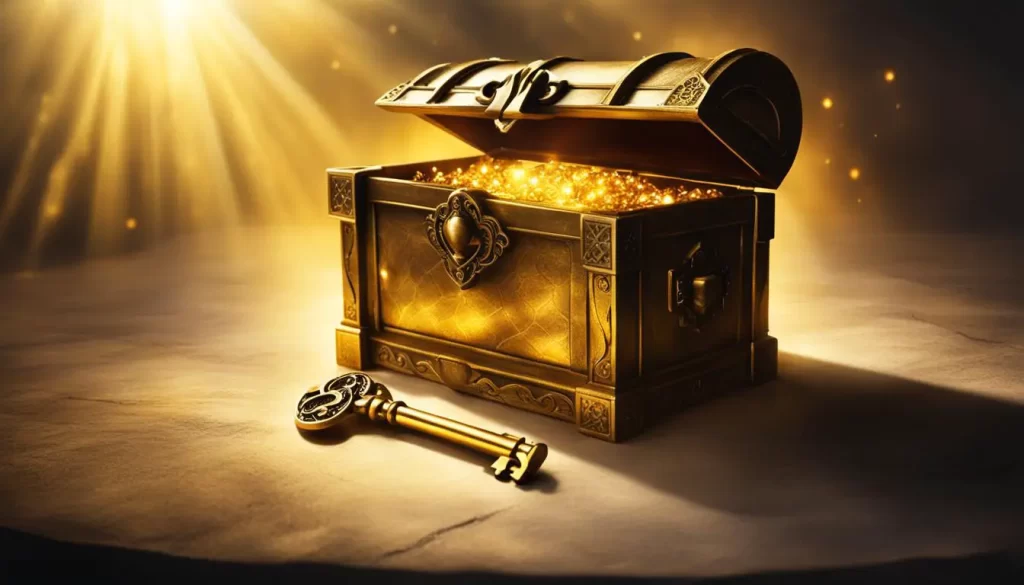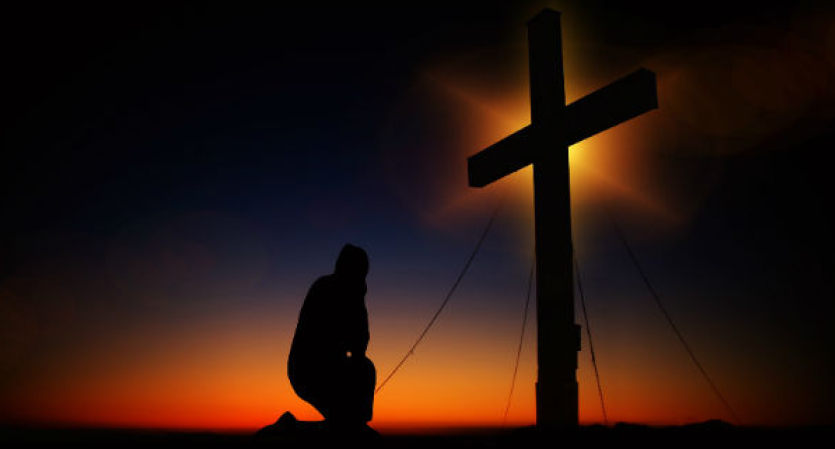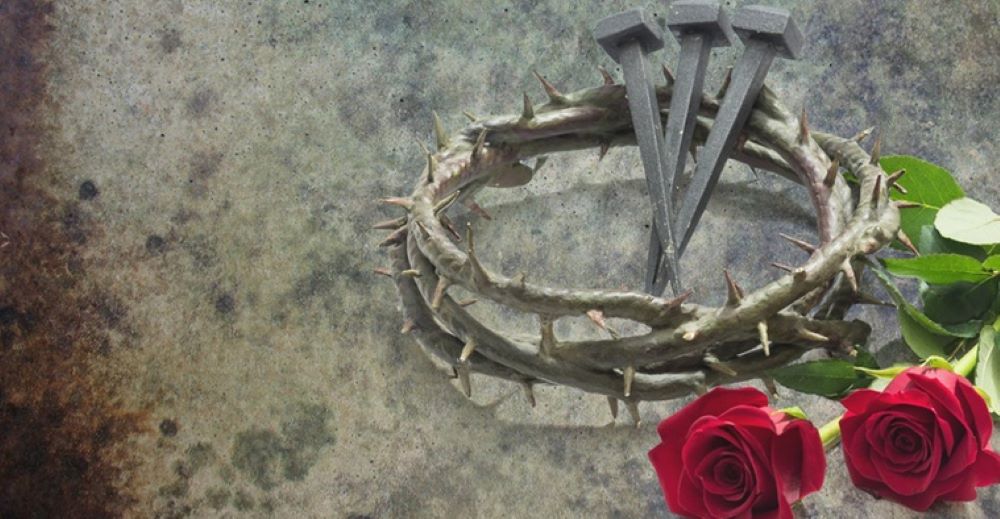The Wonder of His Resurrection
 The Scripture tells us that if the blood of an acceptable sacrifice does not redeem a man, he is most certainly going to spend eternity in hell. We have sugar-coated the cross, but it must not have been a delightful thing to see a man die on the cross outside the hills of Jerusalem.
The Scripture tells us that if the blood of an acceptable sacrifice does not redeem a man, he is most certainly going to spend eternity in hell. We have sugar-coated the cross, but it must not have been a delightful thing to see a man die on the cross outside the hills of Jerusalem.
When our Lord died, the poets have made it so beautiful that we can have the pictures around and send them out on Easter, but it wasn’t a beautiful sight at all. For instance, in World War I, there was a chaplain to the forces called Studdert Kennedy, known as ‘Woodbine Willie’ because he gave Woodbine cigarettes to everybody. He wrote a most marvellous poem called Indifference, Indifference, and it really brings the point home, that people would simply pass by:
When Jesus came to Golgotha, they hanged Him on a tree,
They drove great nails through hands and feet, and made a Calvary;
They crowned Him with a crown of thorns, red were His wounds and deep,
For those were crude and cruel days, and human flesh was cheap.
When Jesus came to Birmingham, they simply passed Him by,
They never hurt a hair of Him, they only let Him die;
For men had grown more tender, and they would not give Him pain,
They only just passed down the street, and left Him in the rain.
Still Jesus cried, “Forgive them, for they know not what they do,”
And still it rained the wintry rain that drenched Him through and through; The crowds went home, and left the streets without a soul to see, And Jesus crouched against a wall and cried for Calvary.
Here was a God Man who was stripped naked, hanging in intense heat and unbearable thirst and exposed to the ridicule of the crowd. Pictures of the crucifixion usually include a loincloth, but that was not true. People who were crucified were exposed to public humiliation; then they were left there without food or drink.
Crucifixion did not kill quickly—the shortest you could expect was two days on a cross, and the longest recorded is seven days. The condemned person was stripped naked. They were then nailed to two beams of wood through the wrists, not the palms of the hand, which would tear with the weight of the body. There is a hole in the wrist joint that they used to put the nails through, which could support the weight. The same with the feet: it was not through the middle of the feet but through the ankle. So, by the wrists and the ankles, they were nailed to the wood and hung up there totally naked.
Crucifixion killed someone by suffocation, as they were unable to breathe. While there was still strength in the limbs, a victim could push up with the feet and breathe and then, when the pain in the ankles got too much, they would relax and hang by the wrists, but then it was more difficult to breathe. So, they would push up again as soon as the pain in the ankles had lessened a wee bit. This constant pushing up and slumping, pushing up and slumping, gradually made the body all too weak.
There came a moment when the legs could not support the weight and push up. That’s when suffocation began, and they died because the pressure on their lungs was too great. As mentioned already, it took two to seven days to accomplish the death of a victim while they hung naked for the world to mock and abuse. It was a dreadful death. No Roman citizen was ever crucified—it was considered too undignified for them.
Why did Jesus die on that cross? To save us from our sins. God sent His only begotten Son so that He might die on the cross and stop the gates of hell, and shut them up so that those who believe in Him should not perish, but have everlasting life.
In the words of the Apostle Peter, He Himself bore our sins in His body on the tree…by His wounds you have been healed (1 Peter 2:24). This had been prophesied 700 years by the prophet Isaiah: He was wounded for our transgressions, crushed for our iniquities; by His wounds we are healed (Isaiah 53:5).
In fact, His death had to do with more than even the human race; it had to do with the entire cosmos. The Lord was dying for the whole wide universe, that all things might be united in Him and that the heavens as well as the Earth might be purged and that new heavens and a new Earth might be established that could never pass away.
In Whom we have our redemption through His blood, which means the forgiveness of our sins. Now He is the exact likeness of the unseen God the visible representation of the invisible; He is the Firstborn of all creation. For it was in Him that all things were created, in heaven and on earth, things seen and things unseen, whether thrones, dominions, rulers, or authorities; all things were created and exist through Him by His service, intervention and in and for Him. And He Himself existed before all things, and in Him all things consist, cohere, are held together (Colossians 1:14-17 AMP).
The Significance of The Resurrection
All this rested upon the shoulders of the Son of God on this night of the crucifixion. That is the profound significance of the resurrection. It was the beginning of the new world. It was the first new creation of God—Jesus’ new body. And our new bodies are going to be like his glorious body. We are not an immortal soul trapped in a mortal body. That is the Greek view, which is still reflected in our education system.
The Hebrew view is what Paul said in 1 Corinthians 15, that this mortal soul must put on an immortal body. When we put on our immortal body, then the victory of the grave has been swallowed up, and death has lost its sting. What God wants is to put a mortal soul into an immortal body, and that is what will happen. So, Christians never say, ‘I believe in the immortality of the soul.’ They say, ‘I believe in the resurrection of the body.’ ‘Resurrection’ there means ‘re-creation’.
The beginning of the new creation will not end until the entire universe has died and been ‘raised again’ in a new heaven and a new earth. Jesus’ resurrection is the beginning of a whole new universe. The God who made the old creation has gone back to work, so we celebrate on the first working day of the Jewish week, Sunday. Since the earliest days, Christians have risen for worship on a Sunday morning because that is the great day of God, beginning again to work in creation, but this time a brand-new creation.
Paul tells us in 1 Corinthians 15:1-12:
And now let me remind you since it seems to have escaped you, brethren, of the Gospel the glad tidings of salvation which I proclaimed to you, which you welcomed and accepted and upon which your faith rests, And by which you are saved, if you hold fast and keep firmly what I preached to you, unless you believed at first without effect and all for nothing.
For I passed on to you first of all what I also had received, that Christ the Messiah, the Anointed One died for our sins in accordance with what the Scriptures foretold, That He was buried, that He arose on the third day as the Scriptures foretold, and also that He appeared to Cephas Peter, then to the Twelve…..
But now if Christ (the Messiah) is preached as raised from the dead, how is it that some of you say that there is no resurrection of the dead? But if there is no resurrection of the dead, then Christ has not risen; And if Christ has not risen, then our preaching is in vain it amounts to nothing and your faith is devoid of truth and is fruitless (without effect, empty, imaginary, and unfounded). We are even discovered to be misrepresenting God, for we testified of Him that He raised Christ, Whom He did not raise in case it is true that the dead are not raised. For if the dead are not raised, then Christ has not been raised;
And if Christ has not been raised, your faith is mere delusion futile, fruitless, and you are still in your sins under the control and penalty of sin; And further, those who have died in spiritual fellowship and union with Christ have perished are lost! If we who are abiding in Christ have hope only in this life and that is all, then we are of all people most miserable and to be pitied. But the fact is that Christ the Messiah has been raised from the dead, and He became the first fruits of those who have fallen asleep in death. Read the whole chapter of 1 Corinthians 15.
Two professors of law in Oxford decided in 1921 to prove that Jesus was dead and thus end Christianity altogether. At the beginning of their summer vacation, they separated, each to examine the evidence and proof that Jesus did not rise from the dead. These were brainy professors, and they set off separately for their summer vacation.
When they met again at the beginning of the next term, one of the professors said to the other, “I’m embarrassed to meet you because I’m convinced He rose from the dead.” The other said, “You don’t know how relieved I am to hear you say that, because I’ve examined the evidence and been convinced.” The two of them got together in 1921 and wrote a book to prove that Jesus rose from the dead based on the circumstantial evidence and the eyewitness testimony, which they now believed.
Another lawyer, Frank Morrison, wrote Who Moved the Stone? I have read it, and please do get hold of that book because he wrote it to prove that Jesus was dead and didn’t rise, but he got no further than one chapter. He explains he had to write a totally different book because he had been convinced by the evidence that Jesus rose from the dead.
So why doesn’t the whole world believe in the evidence? Because they don’t want to — because if Jesus rose from the dead, he was right, not wrong. He was innocent, not guilty. Above all, if you believe that Jesus rose from the dead, you are going to have to change your life. You are going to have to listen to and believe what he said, and life is going to be very different.
The world is therefore prejudiced against the evidence for the resurrection of Jesus from the dead. It is very difficult to persuade them to look at the evidence impartially—they don’t want to. But I have found it is not the evidence that does the trick, it is an experience of the risen Jesus. You can have all the evidence in the world and still not win your argument if someone doesn’t want to believe. But when they want to believe, they can have an experience of the risen Jesus. They won’t need convincing after that. They have had proof from the Lord himself.
Jesus died a terrible death because sin is a terrible thing, and He died and paid the penalty of sin because sin is a painful thing, and we are all guilty, but then, in His love, He comes down in the person of His Son and pays the penalty for us. In this way, He is both just in that He does not allow the guilty to go unpunished and the one who justifies (Romans 3:26) by taking the penalty Himself, in the person of His Son, enables us to go free. He is both our Judge and our Saviour. In effect, He gives us a cheque and says we have a choice; do we want Him to pay it for us, or are we going to face the judgement of God for our sins?
Redemption came by Jesus Christ, We are being justified, declared free of the guilt of sin, made acceptable to God, and granted eternal life as a gift by His precious, undeserved grace, through the redemption, the payment for our sin which is provided in Christ Jesus, (Romans 3:24).
Jesus, by His death on the cross, paid the ransom price. For even the Son of Man did not come to be served, but to serve, and to give His life as a ransom for many (Mark 10:45). In this way, we are set free from the power of sin. This is true freedom. Jesus said, If the Son sets you free, you will be free indeed (John 8:36). It is not that we never sin again, but that sin’s hold over us has been broken. This life is not the end, there is life beyond the grave. History is not meaningless or cyclical; it is moving towards a glorious climax.
One day, Jesus will return to earth to establish a new heaven and a new earth. (Revelation 21:1). Then those who are in Christ will go to be with the Lord forever (1 Thessalonians 4:17). There will be no more crying, for there will be no more pain. There will be no more temptation, for there will be no more sin. There will be no more suffering and no more separation from loved ones.
Then we will see Jesus face to face (1 Corinthians 13:12). We will be given glorious and painless resurrection bodies (1 Corinthians 15). We will be transformed into the moral likeness of Jesus Christ (1 John 3:2). Heaven will be a place of intense joy and delight which goes on forever. Paul tells us, as he is quoting Isaiah 64:4
As the Scripture says, what eye has not seen and ear has not heard and has not entered into the heart of man, all that God has prepared (made and keeps ready) for those who love Him who hold Him in affectionate reverence, promptly obeying Him and gratefully recognizing the benefits He has bestowed (1 Corinthians 2:9).
As C.S. Lewis said in one of his Narnia books-The Last Battle:
The term is over: the holidays have begun. The dream is ended: this is the morning….all their life in this world…had only been the cover and the title page: now at last they were beginning Chapter One of the Great Story which no one on earth has read: which goes on forever: in which every chapter is better than the one before.
I rest my case.


 In Old Testament times most, people were poor and lived at a subsistence level. Thus, leaving an inheritance (normally land) was vital to enable the following generation(s) to continue farming and raise livestock, without getting enslaved. The distribution of the inheritance was executed like this: usually, daughters did not receive land, for they commonly lived with their parents until they married, after which they benefitted from their husband’s land; but all sons received an equal portion of land except the firstborn son who got double:
In Old Testament times most, people were poor and lived at a subsistence level. Thus, leaving an inheritance (normally land) was vital to enable the following generation(s) to continue farming and raise livestock, without getting enslaved. The distribution of the inheritance was executed like this: usually, daughters did not receive land, for they commonly lived with their parents until they married, after which they benefitted from their husband’s land; but all sons received an equal portion of land except the firstborn son who got double: A story is told of a fire in Scotland that destroyed the farm. In the aftermath of the fire, a farmer went into the barn to assess and make sense of what had happened. In the process, a farmer kicked one of the dead chickens and under the chicken wings were six live chickens the mother died protecting.
A story is told of a fire in Scotland that destroyed the farm. In the aftermath of the fire, a farmer went into the barn to assess and make sense of what had happened. In the process, a farmer kicked one of the dead chickens and under the chicken wings were six live chickens the mother died protecting. There is no specific instruction to celebrate or observe Easter in the New Testament. Easter is not about “Easter eggs” or wearing pastels. All these are pagan practices.
There is no specific instruction to celebrate or observe Easter in the New Testament. Easter is not about “Easter eggs” or wearing pastels. All these are pagan practices. During this weekend, Christians around the world will be celebrating the death and resurrection of Jesus Christ. For the Jews, they will be celebrating Passover, which commemorates Israel’s escape from Egypt when the blood of a lamb was painted on their door frames and saved their firstborn sons from death.
During this weekend, Christians around the world will be celebrating the death and resurrection of Jesus Christ. For the Jews, they will be celebrating Passover, which commemorates Israel’s escape from Egypt when the blood of a lamb was painted on their door frames and saved their firstborn sons from death. Daniel Kolenda in his book
Daniel Kolenda in his book As we make New Year resolutions, I want to call your attention to a text that you will find in Genesis chapter 7:1 “Then the Lord said to Noah, “Come into the ark, you and all your household, because I have seen that you are righteous before Me in this generation.”
As we make New Year resolutions, I want to call your attention to a text that you will find in Genesis chapter 7:1 “Then the Lord said to Noah, “Come into the ark, you and all your household, because I have seen that you are righteous before Me in this generation.” He has made everything beautiful in its time. He also has planted eternity in men’s hearts and minds a divinely implanted sense of a purpose working through the ages which nothing under the sun but God alone can satisfy, yet so that men cannot find out what God has done from the beginning to the end. (Ecclesiastes 3:11 AMP)
He has made everything beautiful in its time. He also has planted eternity in men’s hearts and minds a divinely implanted sense of a purpose working through the ages which nothing under the sun but God alone can satisfy, yet so that men cannot find out what God has done from the beginning to the end. (Ecclesiastes 3:11 AMP)